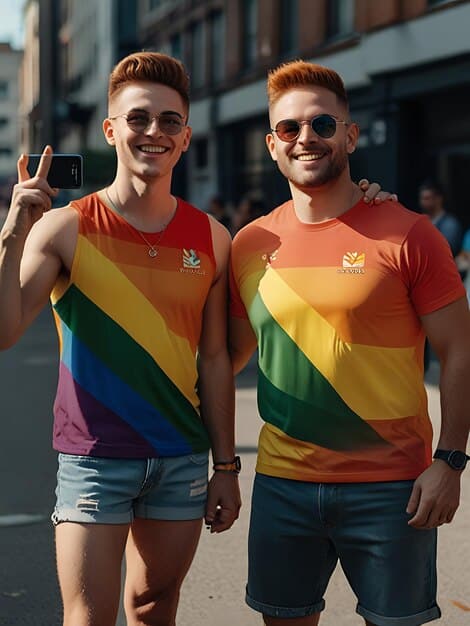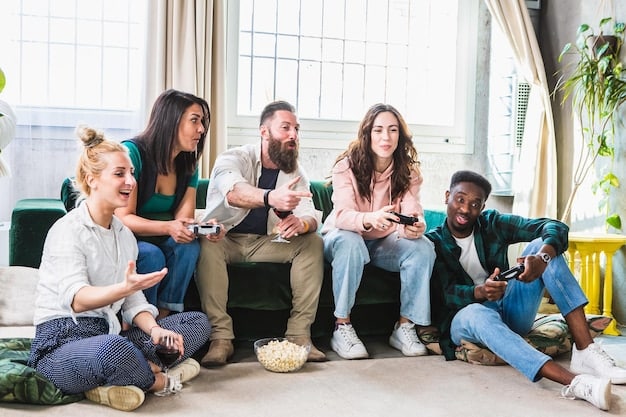Inclusive Esports: Best Practices for LGBT Teams in the US

What are the best practices for creating inclusive and welcoming esports teams for LGBT players in the US? Key strategies include fostering a safe environment, promoting diversity in leadership, and implementing inclusive communication policies. These ensure equitable opportunities and a supportive community for all members.
The esports industry is rapidly growing, and with this growth comes the responsibility to create inclusive and welcoming environments for all players. For LGBT players in the US, this is particularly crucial. What are the best practices for creating inclusive and welcoming esports teams for LGBT players in the US? This article explores the strategies and measures teams can implement to ensure a safe, supportive, and equitable experience for everyone involved.
Understanding the Need for Inclusivity in Esports
Inclusivity in esports transcends mere representation; it’s about fostering an environment where everyone feels valued, respected, and safe. Understanding the specific needs and challenges faced by LGBT players is the first step toward creating a truly welcoming team.
Why Inclusivity Matters
An inclusive environment can significantly impact the performance and well-being of LGBT players. When players feel accepted and supported, they are more likely to thrive and contribute positively to the team.
- Enhanced Performance: Players who feel safe and accepted can focus better on the game.
- Improved Team Cohesion: Inclusivity fosters a sense of unity and collaboration.
- Wider Talent Pool: Attracting diverse talent enriches the team’s capabilities and perspectives.
Creating a welcoming space improves performance, team cohesion and allows a team to attract a wider, more unique talent pool. By recognizing and addressing the specific needs of LGBT players, teams can foster a supportive culture that benefits everyone.

Establishing a Safe and Supportive Environment
A safe environment is the foundation of any inclusive esports team. This involves implementing policies and practices that protect LGBT players from harassment, discrimination, and other forms of negativity.
Implementing Anti-Harassment Policies
Clear and comprehensive anti-harassment policies are essential to ensure that all team members understand the expected behavior and the consequences of violating these policies.
An environment that prioritizes the safety of its players from harassment and discrimination can better promote its esports team. By outlining clear consequences for anti-harassment behavior, no player needs to feel threatened, and can rest assured they are apart of a team that has their best interest in mind.
Creating a Culture of Respect
Creating a culture of respect involves educating team members about LGBT issues and promoting empathy and understanding. Workshops, training sessions, and open discussions can help build awareness and reduce prejudice. This also requires active bystander intervention, where every member feels empowered to speak out against discrimination and support their teammates. When teams proactively cultivate respect and understanding, they can create an exceptionally inclusive environment.
Promoting Diversity in Leadership and Representation
Having LGBT individuals in leadership positions and showcasing diverse representation within the team can significantly impact the sense of belonging and validation for LGBT players.
Elevating LGBT Voices
Ensuring that LGBT individuals have a voice in decision-making processes can help create policies and practices that truly meet their needs. This can involve appointing LGBT individuals to leadership roles or creating advisory boards to provide input on team policies.
By prioritizing and elevating LGBT voices, a team is better suited to make informed decisions regarding team culture, player wellbeing and ensure all possible inclusive measure are up to par with the diverse needs of the team.
Showcasing Role Models
Highlighting successful LGBT esports players and personalities can inspire and motivate other LGBT individuals to pursue their passion for gaming. This can be achieved through social media campaigns, interviews, and other forms of media coverage.
Creating role models is crucial to promote diversity in leadership. This not only inspires other LGBT individuals to seek out gaming, but also sets a standard for other teams to ensure their players are properly representing the esports community, as a whole.
Adopting Inclusive Communication Practices
Communication is key to building a cohesive and inclusive team. Adopting practices that are mindful of gender identity, sexual orientation, and other diversity factors can help avoid misunderstandings and create a more welcoming environment.

Using Inclusive Language
Using gender-neutral language, respecting preferred pronouns, and avoiding stereotypes are essential aspects of inclusive communication. Educating team members on these practices can help create a more inclusive atmosphere.
Using inclusive language can avoid the potential for players to be misgendered and feel uncomfortable. It’s incredibly important to focus on the needs of the team as a whole, and make sure no players are ostracized due to communication errors.
Creating Safe Channels for Feedback
Establishing confidential and safe channels for team members to provide feedback on inclusivity-related issues can help identify and address potential problems before they escalate. This can involve creating anonymous feedback forms or designating a point person for inclusivity concerns.
Creating these channels and ensuring they are utilized properly are a necessary stepping stone to promote diversity. If issues pop up, it’s important they are addressed in a safe and timely channel to ensure all players feel safe and heard.
Enforcing Policies and Providing Recourse
Having robust policies and providing clear recourse for violations are critical to maintaining an inclusive environment. Enforcement should be consistent and fair, ensuring that all team members are held accountable for their actions.
Consistent Enforcement
Enforcement of anti-harassment and anti-discrimination policies should be consistent, regardless of a player’s status or skill level. This demonstrates the team’s commitment to inclusivity and fairness.
- Zero Tolerance: Implement a zero-tolerance policy for harassment and discrimination.
- Clear Consequences: Ensure all team members are aware of the consequences for violating policies.
- Impartial Investigations: Conduct thorough and impartial investigations into all reported incidents.
By enforcing all of these policies and investigating all incidents, no team member needs to feel as though they may be targeted or harrassed. With a clear and concise plan, any team can cultivate diversity and acceptance across player lines.
Offering Support and Resources
Providing access to support and resources for LGBT players who have experienced harassment or discrimination is crucial. This can involve connecting them with mental health professionals, legal support, or LGBT advocacy organizations.
This support is useful in the instance that any negative incidents occur. LGBT player’s can be easily connected with support to make them feel safer and as though their issues are being heard and met with tangible solutions.
Measuring and Improving Inclusivity Efforts
Inclusivity is an ongoing process, and it’s essential to regularly measure and evaluate the effectiveness of inclusivity initiatives. This can involve conducting surveys, focus groups, and tracking diversity metrics.
Regular Assessments
Regularly assessing the team’s inclusivity efforts can help identify areas for improvement and ensure that initiatives are having the desired impact. Teams should consider conducting regular surveys to gauge player sentiment and obtain their feedback on inclusivity measures.
Teams should always be looking for ways to improve and be open to feedback from their team. By implementing surveys, as well as open dialogue, player issues can be addressed and resolved seamlessly.
Continuous Improvement
Using the data gathered from assessments to continuously improve inclusivity initiatives can help create a culture of ongoing growth and learning. This demonstrates the team’s commitment to creating a more inclusive environment for all players.
Overall it’s incredibly important for teams to remain diligent in their pursuit of creating and maintaining inclusive spaces. It’s up to the teams to ensure all players feel safe, and are aware they are supported with the necessary channels so they can continue to thrive and compete, fearlessly.
| Key Aspect | Brief Description |
|---|---|
| 🛡️ Safe Environment | Policies protecting LGBT players from harassment. |
| 🗣️ Inclusive Communications | Using gender-neutral language and respecting pronouns. |
| 🌟 Diverse Leadership | Representation of LGBT individuals in leadership roles. |
| 📊 Continuous Improvement | Regular assessments and policy updates for inclusivity. |
Frequently Asked Questions
Start by establishing clear anti-harassment policies and promoting respectful communication. Educate team members on LGBT issues and ensure leadership embraces diversity.
Implement confidential reporting channels for harassment, consistently enforce anti-discrimination policies, and offer mental health support resources.
Leadership must champion diversity by elevating LGBT voices, showcasing role models, and integrating inclusive practices into all team operations.
Teams should regularly assess their initiatives, ideally through surveys and focus groups, to identify areas for improvement and measure the impact of inclusivity measures.
It helps avoid misunderstandings and ensures that all team members feel respected, valued, and safe, respecting their gender identity and other diversity considerations.
Conclusion
Creating inclusive esports teams for LGBT players in the US is vital for the well-being and success of all involved. By implementing the best practices outlined above, teams can establish environments where LGBT players feel safe, supported, and empowered to thrive.
Ultimately, embracing diversity and inclusivity not only benefits LGBT players but also enriches the entire esports community. What are the best practices for creating inclusive and welcoming esports teams for LGBT players in the US? Implementing these practices will promote fairness, equity, and a celebration of individual differences.





